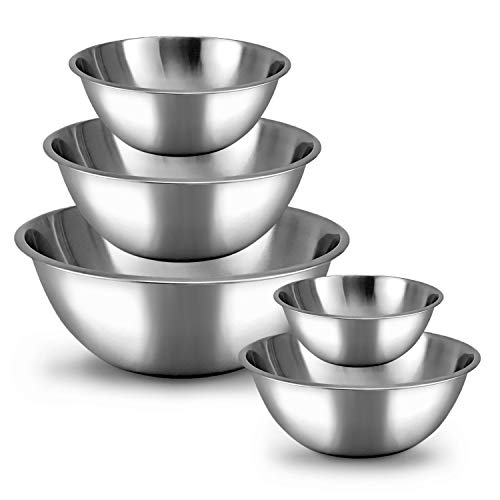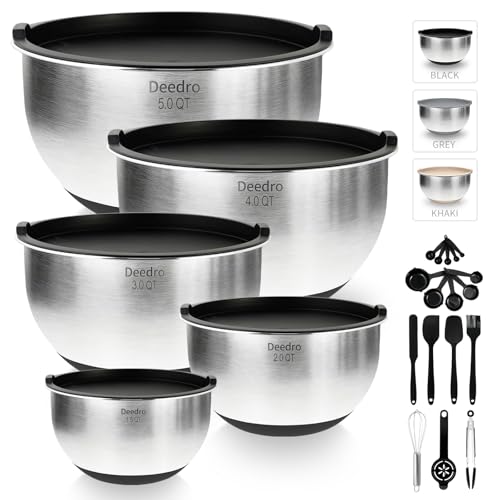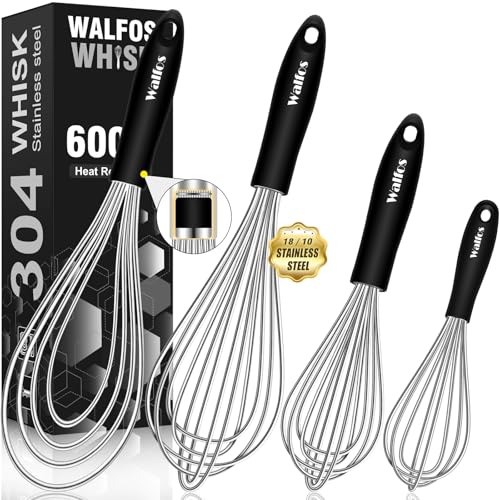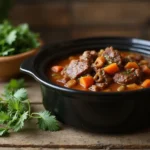Smoked pork neck bones transform from an often-overlooked cut into pure barbecue gold when given the low-and-slow treatment they deserve. We’ve discovered that these meaty, marrow-rich bones pack incredible flavor that rivals any premium cut – and at a fraction of the cost. The secret lies in the smoking process that breaks down tough connective tissues while infusing deep, smoky character throughout.
What makes neck bones truly special is their perfect balance of meat, fat, and bone marrow that creates incredibly rich broths and fall-apart tender meat. We’ll show you how proper seasoning and patience on the smoker creates restaurant-quality results that’ll have your family asking for seconds.
This recipe delivers maximum flavor with minimal effort – just season generously, maintain steady heat, and let the smoker work its magic. You’ll be amazed how this budget-friendly cut becomes the star of your next barbecue gathering.
What Are Pork Neck Bones
Pork neck bones come from the cervical vertebrae section of the pig, located between the head and shoulder. These bones contain a generous amount of meat, fat, and connective tissue that surrounds the vertebrae structure. We find them particularly valuable because they offer an excellent meat-to-bone ratio compared to other lesser cuts.
The marrow inside these bones provides incredible depth of flavor when cooked properly. Each bone typically weighs between 8 to 12 ounces and contains multiple muscle groups that become incredibly tender through slow cooking methods. We appreciate how the natural collagen breaks down during extended cooking, creating that signature gelatinous texture that enhances both flavor and mouthfeel.
Most butchers sell pork neck bones at budget-friendly prices since many consumers overlook this cut. The bones usually come cut into 2 to 3-inch sections, making them perfect for smoking or braising. We notice that fresh neck bones have a deep pink color with white fat marbling throughout the meat portions.
These bones work exceptionally well for smoking because the fat content keeps the meat moist during long cooking sessions. The connective tissue requires low and slow heat to break down properly, which makes them ideal candidates for our smoking technique. We find that the natural sugars in the meat caramelize beautifully when exposed to smoke and indirect heat over several hours.
Essential Equipment for Smoking Pork Neck Bones

Success with smoked pork neck bones starts with having the right equipment to maintain those crucial low temperatures we need for proper collagen breakdown. Our equipment selection directly impacts the final texture and flavor of these budget-friendly cuts.
Smoker or Grill Setup
We recommend using a dedicated smoker capable of maintaining steady temperatures around 250°F throughout the cooking process. Gas grills work excellently when configured for indirect heat smoking. Electric smokers provide consistent temperature control that makes them ideal for beginners. Charcoal smokers offer traditional flavor but require more attention to temperature management.
Temperature Monitoring Tools
Digital thermometers become essential for tracking both smoker temperature and internal meat temperature. We suggest investing in a dual-probe thermometer that monitors both simultaneously. Instant-read thermometers help us check doneness without losing heat from opening the smoker frequently.
Wood Selection and Preparation
Applewood chips or chunks deliver the mild sweetness that complements pork neck bones perfectly. Cherry wood provides similar results with slightly deeper color. We avoid strong woods like hickory or mesquite that can overpower the natural pork flavors. Soaking wood chips for 30 minutes before use creates longer-lasting smoke.
Cooking Surfaces and Accessories
Large cast iron skillets prove invaluable for browning neck bones before smoking. Heavy-duty aluminum pans work well for catching drippings that we can use later for gravy. Heat-resistant gloves protect our hands when handling hot grates and meat. Long-handled tongs give us safe control over the bones during the smoking process.
Preparation Equipment
Mixing bowls allow us to combine seasonings thoroughly before applying to the meat. Baking dishes become useful if we choose to finish cooking in the oven after smoking. Large cutting boards provide adequate space for seasoning and handling multiple neck bones at once.
This equipment foundation ensures we can execute the low and slow cooking method that transforms tough connective tissue into tender, flavorful meat while maintaining the 250°F temperature range that maximizes flavor development.
Ingredients

Before we start the smoking process, let’s gather all the essential components that will transform these humble neck bones into a barbecue masterpiece. We’ve organized our ingredients into three distinct categories to streamline the preparation process.
For the Pork Neck Bones
- 2 to 4 lbs smoked pork neck bones
- 8 cups water (for slow cooking or simmering)
- 1 medium onion, chopped
- 2 to 3 jalapeño peppers, chopped with seeds removed (optional for heat)
For the Dry Rub
- 3 tablespoons paprika
- 2 tablespoons garlic powder
- 1 tablespoon onion powder
- 1 tablespoon salt
- 1 teaspoon black pepper
- Cayenne pepper (optional for heat)
- Smoked paprika (optional for enhanced smokiness)
- Parsley, thyme, oregano, or Italian seasoning (adjust to taste)
For the Mop Sauce
- 1/2 cup apple cider vinegar or vinegar and water mixture
- 1/4 cup olive oil or bacon fat
- 1 tablespoon Worcestershire sauce
- 1 teaspoon garlic powder
- 1 teaspoon smoked paprika
- 1/2 teaspoon black pepper
- Salt to taste
Preparation

Before we start smoking our pork neck bones, we need to properly prepare them to ensure maximum flavor penetration and optimal results. The preparation process involves three essential steps that will set the foundation for our delicious smoked dish.
Cleaning and Trimming the Neck Bones
We begin by thoroughly rinsing the pork neck bones under cold running water to remove any bone fragments or debris from the butchering process. Pat each bone dry with paper towels to create the best surface for seasoning adherence. We trim away any excess fat or gristle that might prevent proper smoke penetration into the meat. Sharp kitchen shears work perfectly for removing stubborn pieces of cartilage or silver skin. This cleaning step ensures we achieve a cleaner taste and allows our dry rub to make direct contact with the meat surface.
Applying the Dry Rub
We create our signature dry rub by combining salt, pepper, paprika, garlic powder, and sage in a mixing bowl. The blend should coat approximately 2 to 4 pounds of neck bones generously without being wasteful. We massage the dry rub into every crevice of the bones, ensuring complete coverage on all surfaces. Our hands work the seasoning into the meat fibers, creating small pockets where flavors can develop during the smoking process. The paprika provides color while the garlic powder and sage deliver the aromatic Southern-style profile that makes these neck bones irresistible.
Marinating Time
We recommend allowing the seasoned neck bones to rest in the refrigerator for several hours or overnight to maximize flavor development. This marinating period lets the salt in our dry rub begin breaking down the meat proteins while the spices penetrate deeper into the tissue. We place the seasoned bones in a covered container or wrap them tightly in plastic wrap to prevent moisture loss. The extended marinating time creates a more complex flavor profile that becomes evident once we start the smoking process. While we can proceed directly to smoking after seasoning, the overnight rest period produces noticeably better results in both taste and tenderness.
Smoking Instructions

Now that our pork neck bones are properly seasoned and ready, we’ll walk through the complete smoking process to achieve tender, flavorful results. The key lies in maintaining consistent temperature and patience throughout the cooking process.
Setting Up Your Smoker
We begin by preheating our smoker to 225-250°F (107-121°C) for optimal low and slow cooking. This temperature range allows the meat to absorb smoke flavor while breaking down tough connective tissue gradually. We ensure our smoker is clean and all vents are properly adjusted for airflow control.
Next, we add our wood chips or chunks to the firebox or designated smoking chamber. We recommend soaking wood chips for 30 minutes before use to create longer-lasting smoke. For gas or electric smokers, we place the wood in the appropriate tray or box according to manufacturer instructions.
Temperature and Wood Selection
We maintain our smoker temperature consistently between 225°F and 250°F throughout the entire cooking process. Temperature fluctuations can result in uneven cooking and tough meat, so we monitor our smoker gauge regularly.
For wood selection, we choose hardwoods that complement pork’s natural flavor profile. Oak provides a balanced, mild smoke that won’t overpower the meat. Hickory delivers a stronger, bacon-like flavor that pairs excellently with pork neck bones. Pecan offers a sweet, nutty smoke that adds complexity without overwhelming the dish.
| Wood Type | Flavor Profile | Best For |
|---|---|---|
| Oak | Mild, balanced | Beginners, subtle smoke |
| Hickory | Strong, bacon-like | Bold flavor preference |
| Pecan | Sweet, nutty | Complex flavor layers |
Smoking Process
We place our seasoned pork neck bones directly on the smoker grates, ensuring adequate space between each piece for proper smoke circulation. The bones should be positioned bone-side down initially to prevent the meat from sticking to the grates.
We smoke the neck bones low and slow for approximately 4 to 5 hours, depending on their size and thickness. During the first 2 hours, we avoid opening the smoker door to maintain consistent temperature and smoke levels. The slow smoking process allows the meat to absorb maximum smoky flavor while the collagen breaks down into gelatin.
Around the 2-hour mark, we can flip the bones to ensure even cooking on all sides. We continue smoking until the meat begins pulling away from the bone ends, indicating proper tenderness.
Monitoring Internal Temperature
We use a reliable meat thermometer to track the internal temperature of our pork neck bones throughout the smoking process. We insert the thermometer into the thickest part of the meat, avoiding contact with bone for accurate readings.
For food safety, we ensure the internal temperature reaches at least 165°F to 170°F. But, for optimal tenderness, we continue smoking until the internal temperature reaches 190°F (88°C). At this temperature, the connective tissue fully breaks down, creating fall-off-the-bone tender meat.
We check the temperature every hour during the final 2 hours of cooking to prevent overcooking. Once our target temperature is reached, we remove the bones from the smoker and allow them to rest for 10-15 minutes before serving.
Finishing Touches

Once our pork neck bones complete their smoking journey, we need to carry out crucial finishing steps that transform good barbecue into exceptional barbecue. These final techniques ensure our smoked neck bones achieve maximum flavor and perfect texture.
Resting the Meat
We must allow our smoked pork neck bones to rest for 5 to 10 minutes after removing them from the smoker. This resting period allows the juices to redistribute throughout the meat, ensuring every bite delivers maximum moisture and tenderness. During this time, the internal temperature continues to rise slightly while the meat fibers relax and reabsorb their natural juices.
We recommend tenting the bones loosely with aluminum foil during the resting process to maintain warmth without trapping steam that could soften the exterior bark. The collagen that has broken down during the long smoking process needs this time to properly gel, creating that signature melt-in-your-mouth texture we expect from perfectly smoked neck bones.
Optional Glazing
We can elevate our smoked pork neck bones with a finishing glaze that adds visual appeal and concentrated flavor. Popular glazing options include brushing the bones with a mixture of honey and barbecue sauce, maple syrup combined with apple cider vinegar, or a simple brown sugar and butter combination.
After applying our chosen glaze, we return the neck bones to the smoker or place them under the broiler for 2 to 3 minutes to caramelize the surface. This technique creates an attractive, glossy finish while intensifying the flavor through the Maillard reaction. We can also thicken any accumulated pan juices by whisking in flour and broth to create a rich gravy that complements the smoky meat perfectly.
The glazing step transforms our rustic smoked bones into restaurant-quality presentation while adding another layer of complexity to the overall flavor profile.
Serving Suggestions

After hours of patient smoking, our perfectly tender pork neck bones deserve thoughtful presentation that highlights their rich, smoky flavors. We recommend serving these succulent bones while they’re still warm, allowing the natural juices and rendered fat to enhance every bite.
Best Side Dishes
Collard greens or turnip greens make an exceptional pairing with our smoked pork neck bones. We slow-cook these hearty greens to complement the smoky, savory pork, creating a traditional Southern combination that balances richness with earthy vegetables.
Black-eyed peas or mixed beans offer another classic Southern comfort option. We often cook these legumes directly with smoked neck bones, allowing the meat’s deep flavors to infuse throughout the beans for an incredibly satisfying meal.
Rice serves as the perfect neutral base for our dish. We recommend plain or lightly seasoned rice that soaks up the savory juices and gravy from the neck bones, creating a complete and filling meal.
Cornbread or fresh biscuits provide the ideal texture contrast to our tender meat. These baked goods help us mop up every drop of the flavorful juices while adding a comforting, homestyle element to the plate.
Sauce Pairings
Our smoked pork neck bones create their own natural gravy when we incorporate the pan drippings with flour and chicken bouillon. This rich, savory sauce enhances the meat without overpowering its smoky essence.
Vinegar-based hot sauce adds a tangy kick that cuts through the richness of the pork. We find that this acidic element brightens the overall flavor profile and enhances the smokiness of our carefully prepared bones.
Tangy mustard sauce provides another excellent option for those seeking additional flavor complexity. The sharp, pungent notes complement the deep, smoky taste of our neck bones beautifully.
Simple onion gravy made with chicken stock and flour creates a traditional accompaniment that we often prepare using the same skillet used for browning. This approach captures all the caramelized flavors from our cooking process.
Storage and Reheating

Once we’ve perfected our smoked pork neck bones, proper storage ensures we can enjoy these flavorful bones later without compromising their tender texture and rich taste. Following the right storage and reheating methods preserves both safety and quality.
Proper Storage Methods
We must cool our cooked smoked pork neck bones to room temperature within 2 hours after smoking to prevent bacterial growth. Airtight containers or heavy-duty freezer bags provide the best protection against moisture loss and freezer burn.
Our refrigerated smoked neck bones stay fresh for 3-4 days when stored properly. For longer storage, we freeze them for up to 2-3 months while maintaining optimal quality. Labeling containers with cooking dates helps us track storage time effectively.
| Storage Method | Duration | Temperature |
|---|---|---|
| Refrigerator | 3-4 days | 40°F or below |
| Freezer | 2-3 months | 0°F or below |
| Room Temperature | 2 hours max | Above 40°F |
Removing excess air from storage bags prevents oxidation and maintains the smoky flavor we worked so hard to achieve. We separate individual portions before freezing to make reheating more convenient later.
Reheating Instructions
Gentle reheating preserves the moisture and tenderness that makes our smoked pork neck bones so appealing. We avoid high heat methods that can dry out the meat and diminish the smoky flavors.
Oven Method: We preheat our oven to 300°F and place the neck bones in a baking dish with a splash of broth or water. Covering with foil creates steam that prevents drying, and heating for 20-30 minutes warms them thoroughly.
Stovetop Technique: Using a covered skillet or saucepan with a little broth or cooking liquid over low heat works effectively. We stir occasionally until the bones heat completely, maintaining their original texture.
Microwave Option: We place neck bones in a microwave-safe dish and cover loosely with microwave-safe wrap or a lid. Heating on medium power in 1-2 minute intervals prevents overheating while we check and stir until hot throughout.
Adding a small amount of liquid during reheating recreates the moist environment that keeps our smoked pork neck bones succulent and flavorful.
Tips for Perfect Smoked Pork Neck Bones

Mastering the art of smoking pork neck bones requires attention to exact techniques that ensure optimal results every time. We’ve discovered these essential tips through extensive testing and refinement of our smoking process.
Space allocation on your smoker proves critical for even cooking. Arrange bones with adequate gaps between each piece to ensure proper smoke circulation and heat distribution. Crowded bones cook unevenly and may develop hot spots that compromise texture.
Create a flavorful dry rub using salt, black pepper, paprika, garlic powder, and sage. This combination enhances the natural smoky flavor while creating a beautiful crust on the exterior. Apply the rub generously and allow it to penetrate the meat for maximum impact.
Brown your neck bones before smoking or baking when possible. This initial searing step adds depth of flavor and creates an appealing crust that seals in juices. Use bacon fat or oil in a heavy skillet for optimal browning results.
Embrace the low and slow cooking philosophy for maximum tenderness. Extended cooking times at lower temperatures break down tough connective tissue and render the meat incredibly tender. We recommend maintaining temperatures between 225°F and 250°F throughout the cooking process.
Incorporate aromatic vegetables like onions and jalapeños during cooking. These additions create complexity in both flavor and aroma while complementing the smoky characteristics of the bones. Remove jalapeño seeds to control heat levels according to your preference.
Preserve and use the cooking liquid as a flavorful base. The rich broth that develops during smoking contains concentrated flavors perfect for beans, rice, or soup preparations. This liquid gold shouldn’t be discarded as it represents hours of flavor development.
Monitor internal temperatures consistently using a reliable digital thermometer. Target 190°F internal temperature for optimal tenderness, though 165°F ensures food safety. Higher temperatures allow collagen to fully break down into gelatin.
Allow proper resting time after smoking to redistribute juices. Cover the bones with foil and let them rest for 5 to 10 minutes before serving. This final step ensures maximum moisture retention and improved texture.
Troubleshooting Common Issues

Even experienced pitmasters encounter challenges when smoking pork neck bones. We’ve compiled answers to the most common problems that arise during the smoking process to help you achieve perfectly tender and flavorful results every time.
Tough or Chewy Meat
The most frequent issue we encounter is tough or chewy meat that refuses to pull away from the bone easily. This problem typically stems from insufficient cooking time or temperature control. Pork neck bones require a “low and slow” approach for at least 2-3 hours at 225°F to 250°F until the meat becomes tender and easily separates from the bones.
When we notice tough meat during cooking, we extend the cooking time by 30-minute intervals while monitoring the internal temperature. Adding moisture through a water pan or light misting with our mop sauce helps break down the tough connective tissue. The natural collagen needs adequate time to convert into gelatin, which creates that coveted tender texture.
Dry Meat Results
Dry neck bones often result from cooking at too high temperatures or failing to maintain proper moisture levels throughout the smoking process. We prevent this by ensuring our initial browning phase is brief and intense to seal in the natural juices before transferring to the smoker.
Maintaining consistent moisture becomes crucial during the extended smoking period. We place a water pan in our smoker and apply our mop sauce every hour after the first two hours of smoking. Wrapping the bones in aluminum foil during the final hour of cooking helps retain moisture while still allowing the meat to reach the proper internal temperature of 190°F for maximum tenderness.
Temperature Control Problems
Inconsistent smoker temperatures create uneven cooking and can lead to both tough and dry meat simultaneously. We address this by investing in a reliable digital thermometer system that monitors both the smoker temperature and the internal meat temperature continuously.
When our smoker runs too hot, we adjust the airflow by partially closing the intake vents and opening the exhaust slightly. For smokers running too cool, we add more fuel and open the intake vents wider while ensuring our wood chips continue producing steady smoke.
Lack of Smoky Flavor
Insufficient smoke flavor disappoints after hours of cooking time. This issue typically occurs when we use the wrong type of wood or fail to maintain consistent smoke production throughout the cooking process.
We achieve optimal smoky flavor by using fruitwoods like applewood or cherry wood, which complement the rich taste of pork neck bones without overwhelming them. Maintaining steady smoke production requires adding wood chips every 45 minutes during the first three hours of cooking. The smoke should appear thin and blue rather than thick and white.
Gravy and Sauce Issues
When preparing gravy from the cooking liquid, lumpy or thin consistency problems often arise. We prevent lumpy gravy by whisking flour gradually into the cooking liquid while stirring constantly over medium heat.
For thin gravy, we simmer the mixture longer to reduce the liquid and concentrate the flavors. When the gravy becomes too thick, we gradually add warm water or broth until reaching the desired consistency. Starting with smaller amounts of seasoned salt or bouillon powder helps us avoid overly salty results.
Bitter or Overpowering Seasoning
Excessive seasoning can mask the natural flavor of the pork neck bones and create an unpleasant bitter taste. We start with conservative amounts of our dry rub and bouillon powder, then adjust seasoning gradually during the cooking process.
When we detect bitter flavors, we balance them by adding a small amount of brown sugar or honey to our mop sauce. This technique helps counteract any harsh flavors while improving the natural sweetness of the pork.
Conclusion
We’ve shown you how to transform affordable pork neck bones into a restaurant-quality barbecue masterpiece that’ll have your guests asking for seconds. With the right equipment proper seasoning and patience you can turn this budget-friendly cut into the star of your next cookout.
The key to success lies in maintaining consistent temperature allowing adequate cooking time and not rushing the process. Remember that these bones reward patience with incredibly tender meat and rich flavors that’ll make you wonder why you haven’t been smoking them all along.
Whether you’re feeding a crowd or meal prepping for the week smoked pork neck bones offer incredible value and versatility. Start with our recipe and don’t be afraid to experiment with different rubs and wood combinations to make this dish your own signature creation.
Frequently Asked Questions
What are pork neck bones and why are they good for smoking?
Pork neck bones come from the cervical vertebrae of the pig and offer an excellent meat-to-bone ratio with rich marrow. They typically weigh 8-12 ounces and contain natural collagen that breaks down during slow cooking, creating tender meat and flavorful broth. Their fat content keeps the meat moist during long smoking sessions, while natural sugars caramelize beautifully when exposed to smoke.
What temperature should I maintain when smoking pork neck bones?
Maintain a consistent temperature between 225°F and 250°F for optimal results. This low-and-slow approach allows the collagen to break down properly, creating tender meat. Use a digital thermometer to monitor both smoker and internal meat temperatures. The internal temperature should reach at least 165°F for safety, but 190°F is ideal for maximum tenderness.
How long does it take to smoke pork neck bones?
Smoking pork neck bones typically takes 4-5 hours at 225°F-250°F. The exact time depends on the size of the bones and your smoker’s consistency. Avoid opening the smoker door during the first two hours to maintain steady heat. The meat is done when it reaches an internal temperature of 190°F and feels tender when probed.
What wood types work best for smoking pork neck bones?
Oak, hickory, and pecan are excellent choices for smoking pork neck bones, providing robust flavor that complements the rich meat. Applewood and cherry wood offer milder, sweeter smoke profiles that also work well. Avoid softwoods and use only seasoned hardwoods. Start with 2-3 wood chunks and add more as needed to maintain consistent smoke.
How should I prepare pork neck bones before smoking?
Clean the bones thoroughly and trim excess fat, leaving some for moisture. Apply a generous dry rub containing paprika, garlic powder, onion powder, salt, and black pepper. Let the seasoned bones marinate in the refrigerator for several hours or overnight. This preparation time allows the flavors to penetrate the meat and enhances the final taste.
What sides pair well with smoked pork neck bones?
Traditional Southern sides complement smoked pork neck bones perfectly. Serve with collard greens, black-eyed peas, rice, cornbread, or biscuits. The rich, smoky flavors pair well with tangy coleslaw and mac and cheese. Consider serving with a vinegar-based hot sauce or gravy made from the pan drippings to enhance the overall meal experience.
How do I store and reheat leftover smoked pork neck bones?
Cool the bones to room temperature within 2 hours, then store in airtight containers. Refrigerated bones last 3-4 days, while frozen ones keep for 2-3 months. Reheat gently in the oven at 250°F, on the stovetop with added liquid, or in the microwave with moisture. Add broth or water during reheating to maintain tenderness and prevent drying.
Why are my smoked pork neck bones tough or dry?
Tough meat usually indicates insufficient cooking time or low temperature. Extend smoking time until the internal temperature reaches 190°F. Dry results often come from cooking at too high heat or inadequate fat content. Maintain proper smoking temperature, don’t trim all fat, and consider wrapping in foil with liquid halfway through cooking to retain moisture.






































